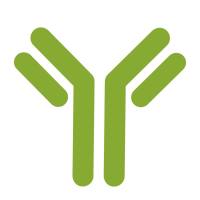We have developed an in vitro model of herpes simplex virus (HSV) latency in primary neurons that mimics many aspects of HSV latency in animal models and the human disease (1 –3 ). Using this model, we demonstrated that HSV-1 and HSV-2 establish latent infections in vitro in the same neuronal cell types that are shown to harbor latent HSV in humans (3 ). Latent HSV infections can be produced in neuronal cultures from ganglia of rodents and primates with similar results (3 ). In all cases examined, the neurotrophin, nerve growth factor (NGF), is required to maintain the latent infections. Depletion of NGF results in the reactivation of latent virus (1 –3 ). Depending upon the conditions and the use of a high multiplicity of infection, latent HSV-1 infections are established in the majority of primary sensory or sympathetic neurons in tissue culture (2 ,4 ). To achieve high efficiency of establishment of latency with little or no evidence of lytic infection, an antiviral agent (e.g., acyclovir) is added to the neuronal cultures during the first week after inoculation with virus. However, latency can be established in the absence of antiviral treatment provided that the multiplicity of infection (MOI) is very low (1 ,2 ). At least one of the actions of the antiviral treatment is to prevent amplification of the input virus in the nonneuronal cells that are present in the culture at the outset of the infection. These nonneuronal cells are destroyed in the presence of acyclovir and virus (4 ). Latency is maintained in neurons in culture for as long as 10 wk in the presence of NGF. Viral transcripts and antigens associated with the productive infection are not detected during the latent infection (2 ,3 ,5 ). Viral transcription is restricted to the latency-associated transcripts (LAT) during the latent infection and is present in the nuclei of 80–90% of the neurons by 3 wk postinfection (4 ,5 ) Upon removal of NGF from the culture medium, for as brief as 1 h, reactivation of latent virus is induced (3 ), and viral antigens associated with the productive infection and infectious virus are detected between 48–72 h after NGF deprivation.

![Tgfb1/Tgfb1蛋白Recombinant Rat Transforming growth factor beta-1 proprotein (Tgfb1)重组蛋白Tgfb1; Transforming growth factor beta-1 proprotein [Cleaved into: Latency-associated peptide; LAP); Transforming growth factor beta-1; TGF-beta-1)]蛋白](https://img1.dxycdn.com/p/s14/2024/0914/559/6161996242349384381.jpg!wh200)




